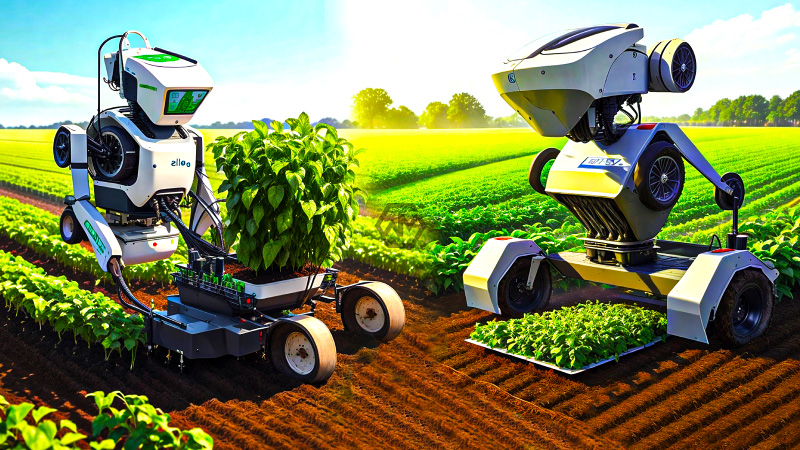- The growing demand for precision farming is driving a rapid expansion of the agriculture robot market.
- The current state of policy is a driving force behind the increased use of agricultural robots on farms.
- Agriculture robot programs are receiving significant funding due to corporate pledges to agricultural innovation.
The growing demand for precision farming and increased labor efficiency is driving a rapid expansion of the worldwide agriculture robot market. With their crucial roles in agricultural planting, harvesting, and crop monitoring, these self-governing devices are transforming conventional farming methods.
This industry is growing rapidly due to technological developments and the pressing demand for sustainable agriculture, which is making farming more effective and profitable for all farmers globally.
Agricultural Robots
The world population is projected to reach 10 billion people by 2050, which will put significant pressure on the agriculture industry to raise production and efficiency.
This is one of the major market drivers. The agricultural robots sector is well-positioned to tackle this issue by providing creative solutions that maximize food production while lowering costs and having the least negative environmental impact.
By making chores like planting, harvesting, and fertilizing easier, robots help farmers produce more food with fewer resources. This increases operational efficiency.
Agriculture robots are advancing precision agriculture, which uses data and technology to maximize agricultural yields and minimize waste. They offer comprehensive information on weather patterns, plant growth, and soil conditions, enabling knowledgeable decision-making during planting, harvesting, and fertilization—finally increasing yields and lowering expenses.
Governments throughout the world are tackling the issue of labor efficiency in the fields by implementing policies to combat climate change, which has led to the implementation of strict environmental rules and strategic incentives. The current state of policy is a driving force behind the increased use of agricultural robots on farms.
Growing farming practices’ cost-effectiveness, scalability, and efficiency are being driven by technological advancements. To completely transform agricultural operations, scientists and engineers are constantly investigating new angles, improving on current techniques, and introducing state-of-the-art technologies.
Agriculture robot programs are receiving significant funding due to corporate pledges to agricultural innovation, which demonstrates a commitment to sustainability that extends beyond simple regulatory compliance.
By incorporating agricultural robots into their operations, supply chains, and long-term business goals, businesses are not only lessening their environmental effect but also establishing a standard for ethical business practices within the agriculture industry.
Based on type, offering, farming style, application, end user, and geography, the worldwide agriculture robot market share is divided into segments. Increased investments, partnerships, and collaborations are anticipated in the farm robotics market shortly as stakeholders pool their resources to develop and implement creative solutions.



